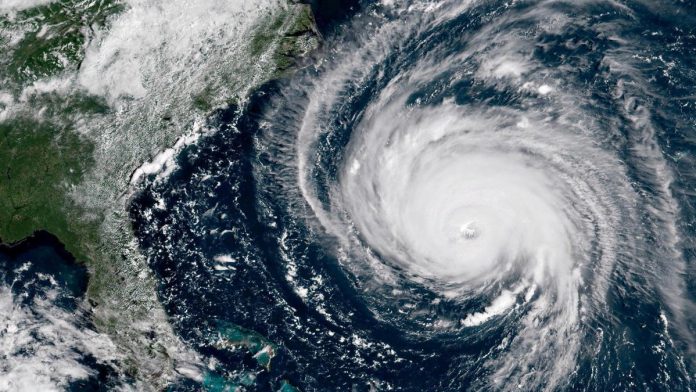
The prediction of hurricanes could be in the future by using a new approach, already three months in advance. This would give the hurricanes threatened regions more time to focus on preparing for the event, and may help reduce the resulting damage.
scientists led by Enrico Scoccimarro from the Euro-Mediterranean Center on climate Change (CMCC) report in the journal “PNAS”, that is, you can tell by using a new approach to Atlantic hurricanes and possible intensity, three months in advance. You have evaluated the average water temperatures in the Eastern Atlantic ocean up to a depth of 40 meters and with the Emergence of hurricanes is correlated. Is routinely used for predictions of hurricanes, only the surface temperature of the sea.
The study only applies to September, months in which there is the strongest hurricane activities in the North Atlantic. The researchers have evaluated the accumulated hurricane energy, so the strength of all hurricane events in total, which occurred in a September month.
Professor Andreas Fink, from the Institute for meteorology and climate research at KIT in Karlsruhe emphasizes that it is on the basis of such analyses, in principle, not possible, “be specific about the path or intensity of an individual storm to dissipate”. The new methodology is not appropriate, therefore, for improved Short – and medium-term forecasts of hurricanes.
long-term forecasts of individual hurricanes is not possible
as before, the point of origin of a hurricane can be a maximum of one week in advance, sometimes only a few days before. Meaningful forecasts for the path of hurricanes three to five days are only possible before. Unpredictable sudden Changes in the intensity of a hurricane, as happened recently when hurricane “Michael”.
Fink concludes: “Only under the grosser prospect of a cumulative activity, it is possible that the prediction horizon of up to three months.” You can, therefore, rather than so far possible to say in advance, that is to be expected in the coming September, with a particularly strong (or less strong) hurricane season. But what’s the point?
“The Use of such forecasts, with forecast periods of several months, the population protection and disaster relief organizations in the affected coastal sections in the event to raise awareness of the forecasts of an active season on a possible ‘land’ in the Region,” says Fink.
Professor Mojib Latif of GEOMAR Helmholtz centre for ocean research (Geomar) is, however, skeptical: “Since it is not in the present study, the forecasts of individual hurricanes is also not clear whether it is possible to improve the results described really the damage prevention. I would be sceptical of that.“
Even if the potential usefulness must be of such long-term forecasts, the study by Enrico Scoccimarro, and his colleagues, is scientifically interesting.
hurricanes solid draw power from up to 100 meters water depth of
lecturer Michael Riemer from the Institute of atmospheric physics at the University of Mainz: “At first glance, it is not surprising that the authors found improved predictability, if you look at the heat content of the ocean instead of just the surface temperature. It is well known that hurricanes draw their energy from the ocean, and the ocean mixing – often up to 100 metres deep – and the energy of the deeper layers of the wiretap.“
But the Exciting thing about this study was that the temperature in the deeper water layers, only an indirect indicator. You show a better statistical correlation with an ocean phenomenon that is demonstrably connected closely with the hurricane activity in the Atlantic ocean: the so-called Atlantic Meridional Mode. “This indirect effect from use of the authors for their improved prediction,” noted Riemer.
















